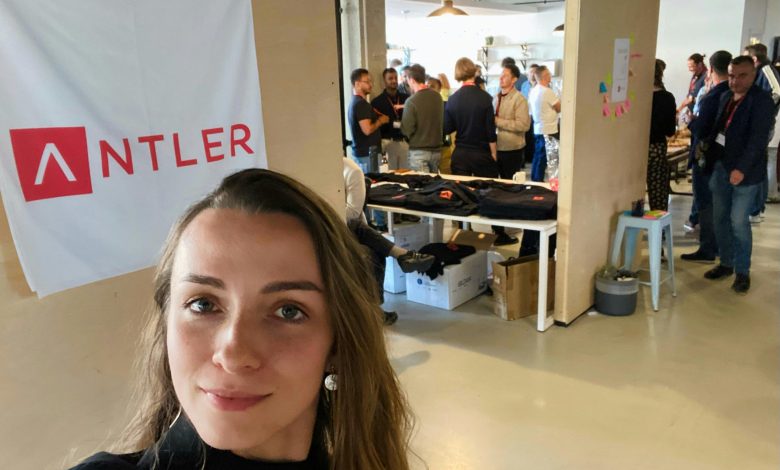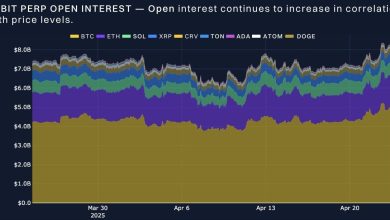How I Didn’t Raise $150K in Antler UK — and Whether You Should Try: My Experience

Hi, I’m Jane. I was born in Japan, now live in London, and I’m building imii.app, a startup helping immigrants integrate through AI-powered personalised support. I also run a boutique communications consultancy for startups, nonprofits, and mission-driven teams.
This is my first post on HackerNoon, and I wanted to start with something honest, personal, and — hopefully — useful for anyone building a company from scratch: accelerators. Particularly one of the most global and most debated: Antler. So here’s my full breakdown of how I didn’t raise $150K through Antler UK — and why, despite everything, I still recommend the program to some founders.
🚀 Accelerators: Should You Apply? And How Do You Choose?
Over the years, I’ve come across 7–8 accelerators — probably more, once I start listing them properly. I haven’t completed them all from start to finish: in some, I joined a few sessions on behalf of a previous employer; in others, I applied solo and made it through the whole thing; and some I dropped halfway. That said — I’ve seen enough to notice patterns. Here’s what I’ve learned:
Not all accelerators are equally useful.
Choosing the right one for you (and your startup) is an underrated skill (and a whole topic for another post, which I’m yet to write). Time is your most limited resource. Don’t waste it on programmes that don’t move you forward.
Apply broadly — even to “non-priority” ones.
As many seasoned founders say, it’s great practice. Every time you answer standard questions about your business, your thinking becomes clearer. More offers = more external validation. That’s not a vanity metric — it’s a signal.
Always ask for feedback after rejection.
This helps you figure out whether it was just a numbers game, or if you genuinely have weak spots. Bonus: sometimes, feedback sessions open unexpected doors — one accelerator decided to invite us after our feedback call.
No reputable accelerator will charge you to join.
If an accelerator is “pay-to-play,” it’s probably not interested in your growth as much as your money. Most valuable accelerators back founders in exchange for equity, not upfront fees.
Some accelerators don’t offer cash — and that’s fine.
Match your goals to what a program offers. If you need funding, go where equity deals are offered. If you need industry access, don’t ignore niche programs that trade equity-free for connections or insight. You can combine programs — but remember, you still need to build your business alongside.
Read the terms carefully.
Otherwise, you risk handing equity to a passive or even obstructive stakeholder. Or worse — losing control of your startup entirely. (Yes, I’m referring to the now-infamous Newchip disaster.)
Be especially cautious with hybrid models that offer “services for equity.”
Over the last few years, we’ve seen a boom in hybrid accelerators and venture studios offering some training + services (usually dev work) in exchange for equity. They might throw in $30K or so in cash — but they also assign a fixed (and inflated) value to services you didn’t ask for. If someone builds you a glitchy MVP in messy offshore code and says it was “worth $50K,” you’ll have a hard time pushing back. And they’ve already got your shares. Personally, I’d rather raise that $30K from angels (FFF: friends, family and fools) and build a scrappy MVP myself. That way, I can iterate quickly and keep ownership clean.
🧬 So, What Is Antler?
Antler is a global venture accelerator that positions itself as a “Zero Day Investor.”
That means they invest in people, not ideas. You can get into the program without a co-founder, without a product idea, even without any startup experience (although the latter definitely helps your chances). Their core belief is that ideas will pivot 100 times before anything meaningful ships — so they want to back founders, not decks. They run programs across Europe, the Americas, Africa, and Southeast Asia — I recently got invited to a new one in Singapore via LinkedIn. While investment terms vary slightly by location, the structure is pretty consistent.
Here’s how the process works:
- You get accepted
- You receive a small living stipend
- You meet other participants and look for a co-founder
- You build something — anything — with them
- You pitch to an internal investment committee
- If approved, you get a pre-seed investment from Antler
🇬🇧 Antler UK: The Specifics
I joined Antler UK in summer 2023.
Their deal was:
- £4,000 living stipend (paid in two £2K instalments)
- 10-week core program, followed by IC (Investment Committee)
- If selected at IC: £120K investment for 10% equity (i.e. £1.2M post-money valuation)
- Of that, you only receive £80K — the other £40K is counted as “programme fee,” taken off your cap table
If you’re not selected, you don’t owe anything — no fee, no strings.
👉 Why don’t they just invest £80K at an £800K valuation?
Because a lower valuation would hurt your future fundraising optics. It’s a workaround, albeit a weird one.
Did I get funded?
No. I didn’t find a co-founder, didn’t pitch at IC, and didn’t raise the $150K. But the experience still gave me a lot to think about — and in many ways, helped me start building imii.app.
🎯 Getting In: My Application Experience
Despite the global nature of Antler, the competition is fierce. For my 2023 London cohort, around 1,500 people applied — and only 69 were accepted. That’s less than 5%. (In more recent cohorts, it dropped below 2%. YC-level odds.) But I’ll be honest — the process was surprisingly easy for me. I submitted my application pretty spontaneously after a regression therapy session (long story), and kind of waltzed through the interviews on instinct.
Here’s what I’d tell others:
-
No secret hacks for the application — just be honest and recent. Don’t list achievements from 10 years ago unless they’re exits. If there’s a time gap, expect them to ask what you were doing.
-
Interviews are about you, not your idea. If you have an idea, great. But what they care about is how you think. Do your market homework. Sketch a rough business model. It really doesn’t matter if you do it right. They want to see founder logic, not a polished deck.
-
First-time founders welcome. I’d never been a co-founder before, but I had worked as the right hand to one in a startup — that counted. Antler values operational insight.
-
Show that you’re hungry. Not just “interested in startups,” but truly motivated to build something, take risks, and lead. If you’ve got that energy, it shows.
What helped me? Honestly — startup trauma. I’d just come off a brutal year watching a startup I loved slowly collapse. I wasn’t a founder there, so I couldn’t change its fate. That rage turned into fuel. I channeled it in the interviews. It landed.
And so, I got in.
🏃 The Program: How It’s Structured
The core program runs for 10 weeks. Here’s what it looks like on the ground:
Weeks 1–2: Accelerator Bootcamp
You’re basically living at the Antler office. It’s nonstop lectures, co-founder speed dating, team formations, more shuffling, coffee, more shuffling again.
Weeks 3–7: Teaming Up & Testing Ideas
Sessions slow down (3x a week), and the focus shifts to execution. You’re encouraged to form teams of 2–3 people. Each team gets a coach and investor office hours.
And here’s the thing: You can reshuffle as many times as you want. They actually encourage this. Try an idea → test compatibility → if it doesn’t work, move on. Fail fast, pivot faster.
Our photos were literally stuck on the wall and moved around like a real-life dating board — matching people, breaking them up, regrouping again. It was hilarious and chaotic.
Weeks 8–10: Final Sprint
By Week 8, team formation closes. If you’re still solo, you’re allowed to join existing teams (as a third person), but you can’t start a new one. The logic? You just won’t have enough time left to show meaningful traction otherwise.
At this point, teams are:
- Wrapping up validation
- Preparing their pitch
- Getting filtered by local Antler staff
- If approved, they go to the global Investment Committee
That’s where the £120K decision gets made.
✅ What I Genuinely Liked
- Co-founder compatibility tools: They give you real frameworks to assess whether someone’s right for you. Think dating logic — but applied to risk, ambition, skills, and emotional safety.
- Ideation frameworks: Surprisingly solid guidance on how to spot patterns, validate assumptions, and refine your “why now.”
- Progress tracker: Antler uses a custom tracker that nudges you to stay focused, prioritise, and document your progress.
- Investor feedback loops: You can book time with Antler partners and get real investor-style pushback. If you follow the playbook, it increases your IC chances. If you challenge it — well, sometimes that’s more fun.
- The people: There were genuinely smart, talented folks in the room. Some were repeat founders. I learned a lot just from hallway chats.
❌ What Didn’t Work for Me
…Honestly? Quite a few things.
Sector-Agnostic = Talent Mismatch
Antler’s strength — its broad scope — is also a weakness. If you’re building in a niche or technical field, you might struggle to find a good match.
I considered staying in healthtech – but for that, I would have needed someone with medical and/or deeptech experience. But out of 69 people, only 11–12 had technical backgrounds. The rest were generalists: business, marketing, operations.
I might have had better luck in a more specialised program like Entrepreneurs First (deeptech/science) or Zinc (sustainability, health, environment).
Too Much Ideation, Not Enough MVP
Yes, it’s important to validate before you build — but at some point, you need to get your hands dirty.
In my view, the program leaned too heavily on idea discussions and not enough on how to execute. We needed more hands-on sessions on building MVPs, shipping fast, and testing properly. Honestly, even in the validation phase, I learned more from The Mom Test and another accelerator I joined later.
Feedback Style Was… Demotivating
Investor partners gave frequent feedback — but often in a “this won’t work, next” kind of tone. They call it “realistic VC training.” Maybe that works for some people. But not for me.
In real life, when I’m pitching investors, I’m in armour. In the accelerator, I’m trying to learn. And for me, harsh feedback in a learning setting kills my drive and self-esteem. I shut down instead of rising up. At that point, I was already dealing with burnout and had just received an official MADD (mixed anxiety–depressive disorder) diagnosis after an extremely rough year. My last potential co-founder dropped out. And I didn’t have the energy to rally again.
If I’d found even one more possible match, things might’ve gone differently. But it just didn’t happen.
Poor Communication & Organisation
This was probably the most frustrating part of the program — and the most surprising, given Antler’s global footprint and slick branding. Behind the scenes, the communication was disorganised and often just… missing. Behind the scenes, the communication was disorganised and often just… missing.
-
Basic questions went unanswered for weeks. I remember asking for the referral link (yes, the standard one they tell you to share with your network) and having to follow up multiple times to get it. And never got it.\
-
Referrals and intros that coaches promised simply never came.The program talks a lot about their “global network of experts” and how your coach can connect you to whoever you need — but in practice, you have no way of knowing who’s in that network unless someone thinks to tell you. If your coach doesn’t remember that, say, they once worked with a perfect contact for your startup… well, that’s it. You’ll never know.
-
Investor call bookings were confusing and inconsistent. There were opportunities to book 1:1 calls with external investors — but only for “formed teams.” This rule was clearly communicated. The booking links were posted in team chats, and I didn’t have access as a solo founder. I accepted that.
** But then, a couple of weeks later, I noticedindividuals were quietly booking those calls on their own. No announcement, no change in rules — I still don’t know whether there was anything I was supposed to know and missed.\ -
Bringing in an external co-founder was technically allowed — but in reality, the process was a black hole. At Week 7, I tried to bring in someone from outside the cohort. Antler had previously said that was fine, as long as it was before the cut-off. I asked for the formal steps. No one replied. I chased them. Nothing. When I finally got them to respond, turns out there was a whole process that was never communicated clearly – and now it was too late.
**When I pushed back, they shrugged it off with:“You understand it’s quite late in the program, right? You probably wouldn’t have had time to show progress anyway.”
Which was… okay. But the delay was entirely on their side. And even if wehadn’t had enough time to progress, that should’ve been my decision to make — not something blocked by admin inertia.\
-
By Week 8, if you didn’t have a team, you basically became invisible. The message was subtle, but clear: we’re focused on the investable teams now. If you’re solo, we’re not wasting resources. That meant fewer check-ins, fewer responses, and the feeling of being gently pushed out the door.\
Overall, for a company that’s raised hundreds of millions and runs accelerators across multiple continents, I expected better operational hygiene. At minimum: clearer processes, faster replies, and equal access.
🧨 Investment Drama: Two Real Stories From Our Cohort
Despite the clean structure on paper, what happens at Investment Committee (IC) isn’t always as predictable as it sounds. Here are two real cases from my cohort that left a lasting impression — and a bitter aftertaste.
Case 1: $10M Loan or No Deal
One team had a strong pitch in proptech — solid idea, compelling traction, great chemistry. They got through the initial IC with a green light.
But then came a curveball: Antler agreed to invest only if they took out a £10M loan from a bank immediately.
Why? To prove they could secure property assets for their proposed business model.
Here’s the problem: they didn’t need that money — yet. Their next steps were to build the platform, streamline processes, and test. Taking out a giant loan would’ve meant paying interest on funds they didn’t need, just to satisfy optics.
The team had to walk away. And eventually disbanded.
Case 2: Surprise — You Have a Competitor…
In Antler Another team was working in debt collection tech. They had real traction and strong founder experience. They pitched, passed IC, and were told investment was a go.
Then someone realised: “Oops, Antler’s other regional office just invested in a direct competitor. So… never mind.”
Investment offer rescinded. Team left hanging (and eventually broke up).
Sure that wasn’t something that happened overnight. It was a communication breakdown — and one that cost a promising team their runway.
🙋 So… Would I Still Recommend Antler?
Yes. With caveats. Despite my mixed experience, I still recommend Antler to certain types of founders — especially those who:
-
Want to try building something in a new market
-
Haven’t launched a startup before but want to try
-
Don’t have a strong local network
-
Are confident they can find a co-founder early
But if you’re already an experienced founder or have a working MVP, Antler might not give you much. It’s not designed to scale what you’ve built — it’s designed to launch you from zero.
💡 Final Takeaways (AKA: What I Wish I Knew)
- If possible, bring your own co-founder. Don’t rely on the program for that — use it as a backup, not your main source.
- Don’t get stuck in ideation. Build. Test. Iterate. Even if your coach says you haven’t done “enough user interviews,” sometimes you need feedback from real product usage, not theory.
- Pick a program that matches your industry. If you’re building in healthtech, fintech, or deeptech, you may benefit more from a specialised accelerator like Zinc or Entrepreneurs First. You’ll meet more relevant people — and more relevant investors.
🏁 In the End…
I didn’t raise £120K. I didn’t find a co-founder (then). But the experience gave me the push I needed to start working on imii — and clarity on the kind of founder I want to be.
If you’re just starting out and unsure where to begin, Antler might be the right place. Just go in with your eyes open. Read the terms. And stay true to your instincts.
Like this kind of brutally honest founder story? Follow me here on HackerNoon or connect on LinkedIn.






